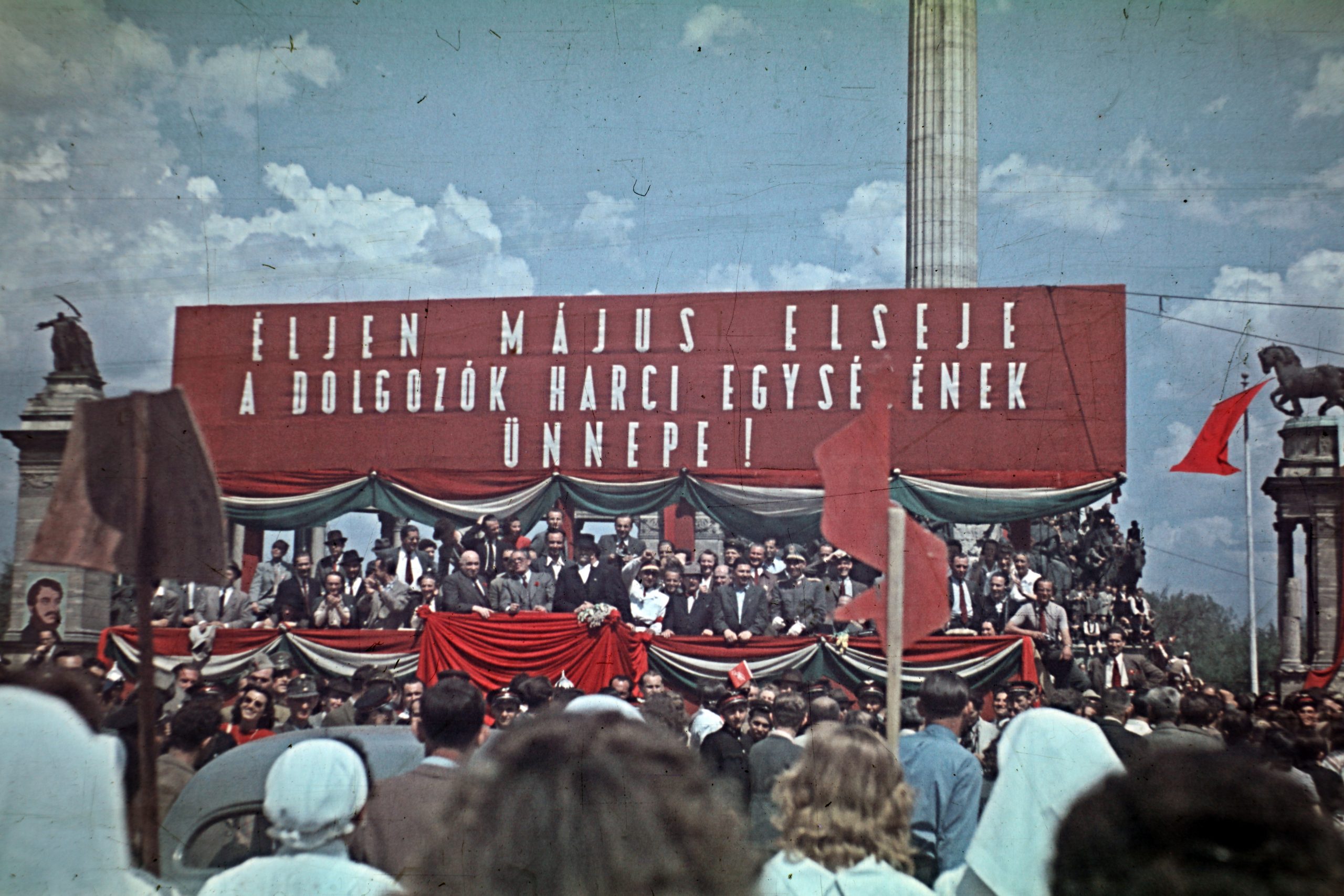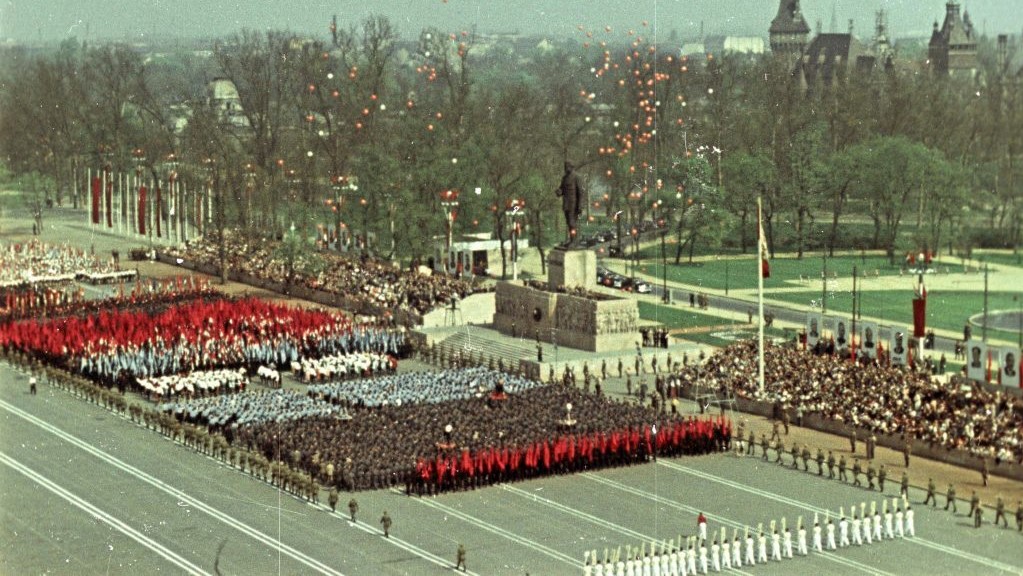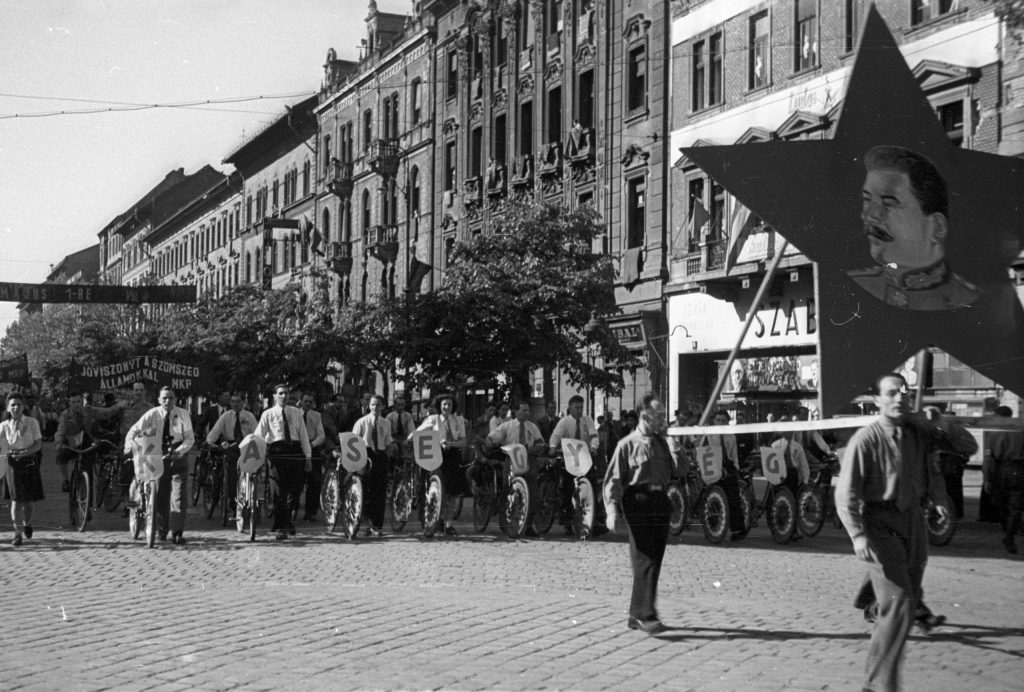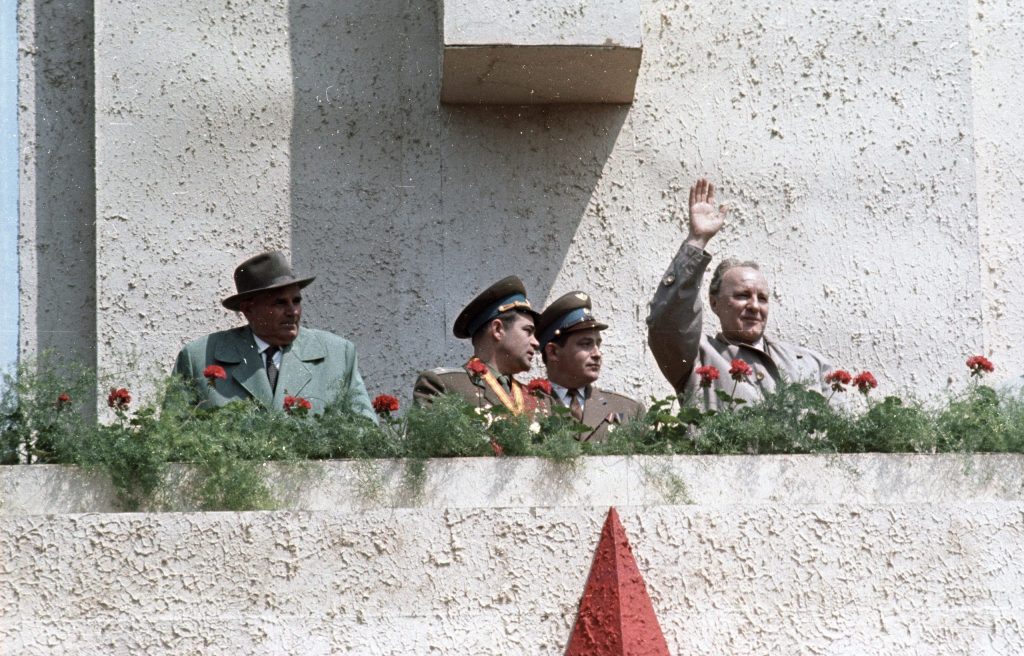
The pictures of the first official May Day in Hungary perfectly capture the spread of the communist dictatorship's ideology among the members of the society.Continue reading

Almost all of Europe (and many other nations outside the continent) celebrates Labor Day, the origin of which goes back to the history of the USA. On May 1, 1886, trade and labor unions organized a large general strike. It was triggered by poor working conditions and the underpayment of industrial workers. It is a day off from work for the vast majority of Hungarian workers. In the past, in communist Hungary, it was celebrated with many events and huge parades where the political leadership could further spread communist propaganda. How is it possible that a western celebration was adopted by communist countries?
This article was originally published on our sister-site, Ungarn Heute.
Despite its U.S. origin (a general strike on May 1, 1886), this day is celebrated in the U.S. and Canada not on May 1, but on September 1. Originally, the strike was aimed at reducing daily working hours, which were then 10-13 hours, to eight hours. At that time, it was decided to start the campaign on May 1, because in many American companies the new fiscal year began on that day, which also meant that many labor contracts would have gone into effect on May 1.
Around 340,000 people participated in the strike. A major center of the demonstrations was Chicago, where some companies went on strike for several days. On May 3, three striking workers at the McCormick Harvester factory were killed in a demonstration. The next day, a protest march took place, and in the evening, as the march was breaking up, the Haymarket riot broke out. Someone threw a fragmented bomb at police officers. The police responded by firing on the workers. Seven police officers and at least four civilians were killed. Because of this event, there is a tradition of May Day marches. Although we date the origin to 1886, there were earlier labor movements fighting for the establishment of the 8-hour workday, such as April 21, 1856 in Australia.
How can it be that a Western event became a communist tradition? It is perhaps a mitigating circumstance that the Briton, Robert Owen, who as early as 1817 wanted to improve the situation of workers with the slogan “Eight hours labour, Eight hours recreation, Eight hours rest,” was one of the founders of utopian socialism. He was a socialist who had the interests of workers at heart. The fact that he came from a capitalist country was dwarfed by his socialist virtues.
Although the holiday did not become an official state holiday in Hungary until 1946, it already existed in 1919, when the ‘Hungarian Soviet Republic’ was created. The day was celebrated even though the country was practically in ruins after World War I, the situation was chaotic, the Czechoslovakians in the north, and the Serbs and Romanians in the south were invading the Hungarian territories.

‘Long live the proletarian dictatorship’ painting by Albert Baky (1868–1944). Source: wikipedia.org

Andrássy Street on May 1 in front of the building of the Hungarian State Opera. Photo: Fortepan / SK
In the Kádár era (1956-1989) the day also had a special meaning. In the ideology of communism, the concept of the working man, the working people, played a very important role, and people were obliged to have a job. People took to the streets all over the country. Parades were held all over Hungary, and people paraded through the capital with banners, flags and signs. Participation in the celebrations was mandatory and the various factories, companies and offices had to take part in groups.
There are typical delicacies that people still like to eat nowadays even on this day, such as various sausages, beer, or cotton candy.

József Boulevard on May 1, 1946. Photo: Fortepan / Pál Berkó

Stalin Square (today Ötvenhatosok tere) on May 1, 1955. Photo: Fortepan

May 1, 1964, From left: István Dobi, immediately next to him Soviet cosmonaut Adrian Nikolayev and János Kádár, Photo: Fortepan / Gyula Nagy
The parade was so important for the socialist countries that it was even held during the world’s biggest nuclear disaster: On April 26, 1986, Chernobyl reactor unit 4 in Ukraine exploded without the knowledge of the Atomic Energy Commission, enveloping the area in a cloud of nuclear dust. Forty times more radioactive material was released into the atmosphere than in the atomic bombs dropped on Hiroshima and Nagasaki. Three million people in Ukraine and two million in Belarus were exposed. The mass media in the socialist countries first denied the disaster and then tried to minimize it. On Gorbachev’s orders, artificial rain clouds were created in Moscow on May 1 and the radioactive cloud was directed at Belarus so that a parade could be held in the Russian capital. In Hungary, hundreds of thousands celebrated Labor Day in the streets without knowing that they were actually in danger.
Featured photo via Fortepan